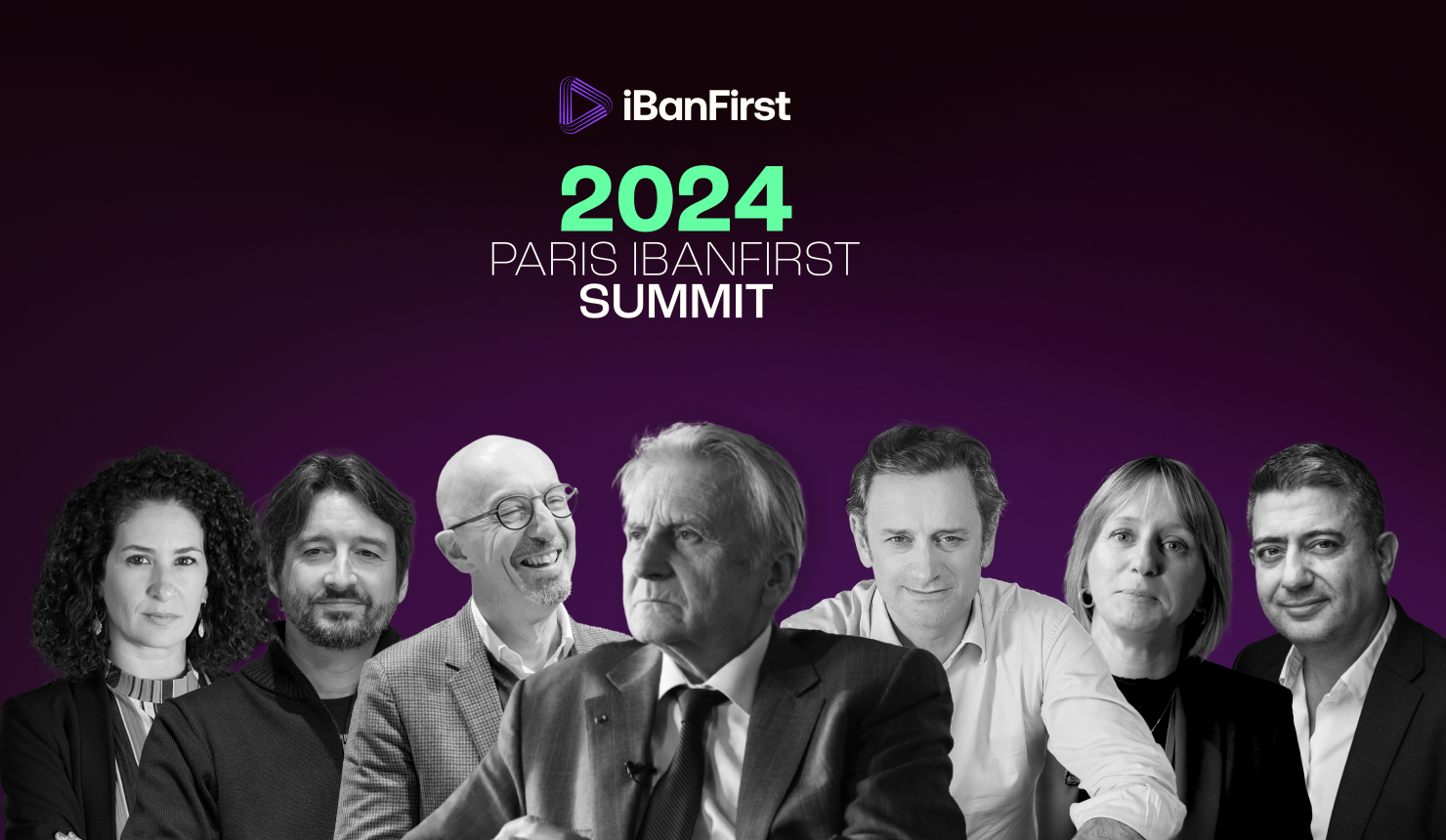Persistent inflation, currency volatility and AI disruption — how can your business stay competitive internationally despite these challenges?
At the recent iBanFirst Business Summit 2024, top experts — including former president of the European Central Bank Jean-Claude Trichet — shared practical insights on export opportunities, financial risk management and the impact of AI on businesses.
Here’s what you need to know to transform your international business strategy.
US growth vs Europe’s strengths
The US economy is bustling right now, which is making inflation more complicated than in Europe, according to Jean-Claude Trichet.
But don’t redirect all your attention stateside just yet. While the US appears to be outperforming Europe, a key factor is the US government’s highly expansionary fiscal policy, which distorts the growth comparison. As Trichet notes, the US runs a major external deficit, while the EU enjoys a current account surplus, effectively financing the rest of the world.
Looking ahead, projections for 2030 show 2.1% average growth in the US versus 1.3% in Europe. Why the gap? Two key factors: Europe's weaker startup funding ecosystem and historically strong immigration flows to the US, particularly from Latin America. However, keep an eye on Trump's policies here — they'll directly impact where you should be focusing your international efforts.
| Bubble alert: A word of warning from Jean-Claude Trichet
The stock market gap between Europe and the US should raise eyebrows. Trichet highlights the growing valuation gap between the US and European stock markets. In 2017, US stocks were one standard deviation above the European average. By 2020, this had increased to two. By 2023, three. As of December 2024, the gap neared four. “We haven’t seen this since World War II,” he warns, suggesting a potential market bubble. |
Turn Europe’s weaknesses into your export advantage
Slower growth, a fragmented banking market and a weaker euro — these challenges can actually work in favour of businesses looking to expand internationally, argues Arnaud Caudoux, Deputy CEO of Bpifrance. “Now is a great time to go global,” he adds. Despite geopolitical uncertainty, there are faster-growing markets outside Europe and businesses can benefit from current financial conditions, like the euro’s weakness.
However, going international comes with structural shifts that businesses must prepare for:
- Disrupted performance indicators: Entering a new market can be costly, and you may need to adapt your products. So, it’s crucial that you factor in customer acquisition costs and non-payment risks when entering a new market.
- Cultural differences: In some countries, signing a contract doesn’t necessarily mean a commitment in the same way it might in Europe. In India, for example, a contract is just the beginning — it’s only binding when money changes hands.
- Local tax complexities: Decisions about whether to invoice from France or a foreign subsidiary can impact VAT and transfer pricing. Businesses must consider both the compliance risks and the potential opportunities.
- Hiring strategy adjustments: Recruiting local talent with market expertise is key to managing day-to-day challenges like payment methods, letters of credit and documentation.
Managing currency risk with innovation
"Foreign exchange market volatility is back, and at unprecedented levels," warns Ivo Mertens, Chief Revenue Officer at iBanFirst. Your international success now depends on cash flow and currency exposure.
Timing is everything. As Xavier Lazarus, co-founder of investment firm Elaia, points out, poorly timed currency conversion can create a cash flow swing that exceeds a top CFO’s salary for two years, plus all the fees from a service like iBanFirst.
And don't forget about late payments — a leading cause of business failures in France — as these can be even more dangerous internationally.
The good news is that innovation can help mitigate these risks. Consider looking into tools that connect to your bank accounts for real-time cash flow tracking and margin analysis.
For SMEs, which often lack in-house FX expertise, platforms that combine multi-currency payments with risk management capabilities can be a game-changer. "Make sure your payment solutions integrate directly with your invoicing," adds Pennylane's CFO Raphaël Nahum.
Integrating AI for productivity and growth
"AI isn’t the future anymore — it's already here", said Sébastien Marchon, CEO of Rydoo. Corporate AI solutions enable instant data analysis, such as translating a Mandarin receipt into French or detecting financial anomalies.
But AI can deliver far more than just time savings. It's helping businesses like yours:
- Attract and retain top finance talent who want to work with cutting-edge tools
- Dramatically improve customer payment experiences
- Fill the gap when you can't afford a dedicated data analyst
- Create entirely new value propositions for your services
The next AI wave — focused on data — will transform your financial planning overnight. Imagine building complex business plans in seconds, not days. The businesses that thrive will be those agile enough to adapt quickly. Start by showcasing real use cases to your team to drive adoption.
Looking for more insights? Check out the full recording of the iBanFirst Summit 2024.
Topics






